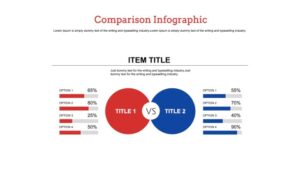Writing Compelling Case Studies sets the stage for crafting narratives that captivate and convince, blending data with storytelling for a powerful impact. Dive into the world of case studies where facts meet creativity in an engaging fusion.
Introduction to Case Studies

Case studies are detailed analyses of a particular individual, group, event, or situation. In the business and marketing world, case studies play a crucial role in showcasing real-life examples of success stories, challenges faced, and solutions implemented by companies. These studies provide valuable insights into effective strategies, best practices, and lessons learned that can be applied in similar scenarios.
Purpose of Writing Compelling Case Studies
Case studies help businesses build credibility, establish expertise, and attract potential customers by demonstrating their ability to solve problems and deliver results. By presenting a compelling narrative with concrete data and testimonials, organizations can showcase their unique value proposition and differentiate themselves from competitors.
- Highlight success stories and achievements
- Illustrate problem-solving skills and innovative approaches
- Showcase customer satisfaction and loyalty
Examples of Industries Using Case Studies
Case studies are commonly used in industries such as:
- Technology: showcasing the implementation of new software or hardware solutions
- Healthcare: demonstrating successful patient outcomes and treatment methods
- Finance: illustrating investment strategies and financial planning approaches
- Retail: highlighting customer engagement tactics and sales growth strategies
Components of a Case Study
When crafting a compelling case study, it is essential to include key components that will engage the reader and effectively communicate the success story. These components typically include the introduction, problem statement, solution, and results.
Importance of Data and Statistics
Utilizing data and statistics in a case study is crucial to provide concrete evidence of the success achieved. Numbers and statistics add credibility to the case study and help in quantifying the impact of the solution implemented. Including real data can make the case study more persuasive and compelling to the audience.
Structuring for Maximum Impact
Structuring a case study for maximum impact involves organizing the content in a clear and logical manner. Start with a captivating introduction to hook the reader, followed by a concise problem statement to highlight the challenges faced. Then, detail the solution implemented, focusing on the steps taken and the strategies used. Finally, present the results achieved, showcasing the positive outcomes and benefits. By structuring the case study in this way, you can effectively convey the success story and leave a lasting impression on the audience.
Writing Style and Tone

When it comes to writing a case study, the appropriate style is a mix of formal, factual, and persuasive elements. You want to present information in a clear and professional manner while also persuading the reader of the benefits or solutions your product or service provides.
Importance of Using a Customer-Centric Approach
It is crucial to adopt a customer-centric approach in case studies as it helps in creating a connection with the target audience. By focusing on the customer’s experience, pain points, and successes, you can showcase the real impact of your product or service.
Maintaining a Balance Between Storytelling and Factual Information
To maintain a balance between storytelling and factual information in a case study, make sure to weave in real-life examples and anecdotes while also providing concrete data and results. This combination keeps the reader engaged while also highlighting the key points effectively.
Using Visuals in Case Studies: Writing Compelling Case Studies
Visuals play a crucial role in enhancing a case study by providing a visual representation of data, trends, and key information. Incorporating charts, graphs, images, and other visual elements can help engage the reader and make complex information more digestible.
Tips for Effective Incorporation of Visuals
- Choose visuals that directly complement and reinforce the written content.
- Avoid cluttering the case study with too many visuals; only include those that add value.
- Ensure that visuals are clear, concise, and easy to interpret.
- Label all visuals appropriately and provide a brief explanation of their significance.
Importance of Visual Hierarchy and Design
Visual hierarchy is essential in guiding the reader’s attention to the most critical information in a case study. By strategically arranging visuals and text, you can create a visually appealing layout that helps convey key messages effectively.
| Visual Hierarchy Tips: | Use different sizes, colors, and styles to differentiate between headings, subheadings, and body text. |
|---|---|
| Design Considerations: | Choose a cohesive color scheme and layout to maintain visual consistency throughout the case study. |
Interviewing Techniques
When it comes to conducting effective interviews with case study subjects, it’s crucial to ask the right questions in order to gather relevant information that will add value to your case study. Building rapport and trust with interviewees is also key to getting honest and detailed responses.
Strategies for Effective Interviews, Writing Compelling Case Studies
- Prepare a list of open-ended questions to encourage in-depth responses.
- Listen actively to what the interviewee is saying and ask follow-up questions to clarify or delve deeper into certain points.
- Create a comfortable and safe environment for the interviewee to feel open and honest.
Importance of Asking the Right Questions
Asking targeted questions helps in gathering specific information that is relevant to the case study objectives.
Tips for Building Rapport and Trust
- Start the interview with some casual conversation to break the ice and make the interviewee feel more comfortable.
- Show genuine interest in the interviewee’s responses and experiences.
- Maintain a professional demeanor while also being empathetic and understanding.












